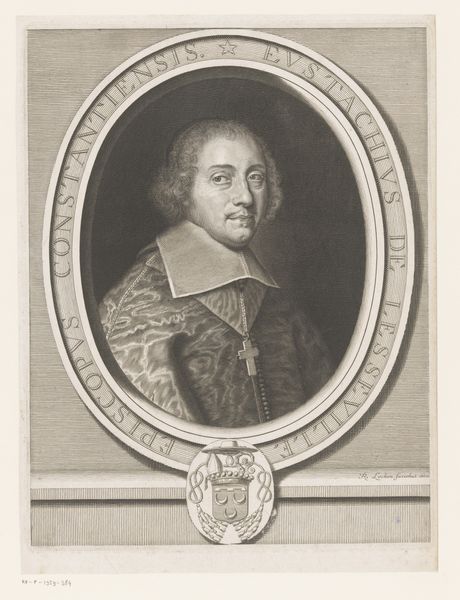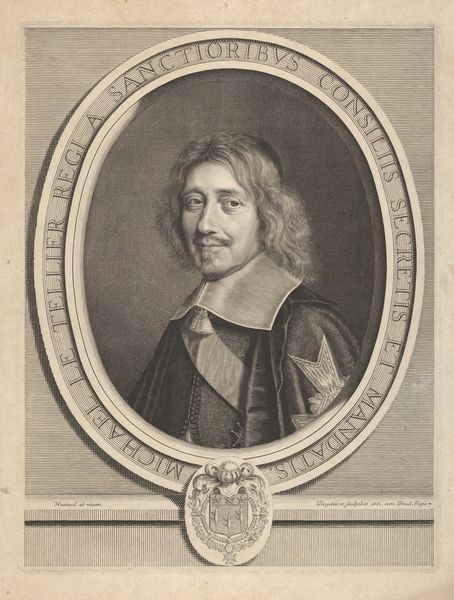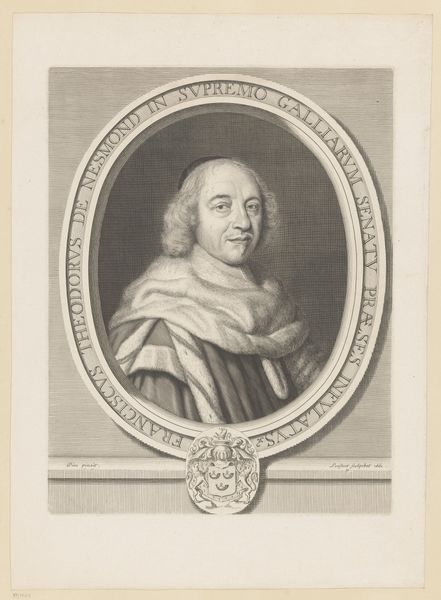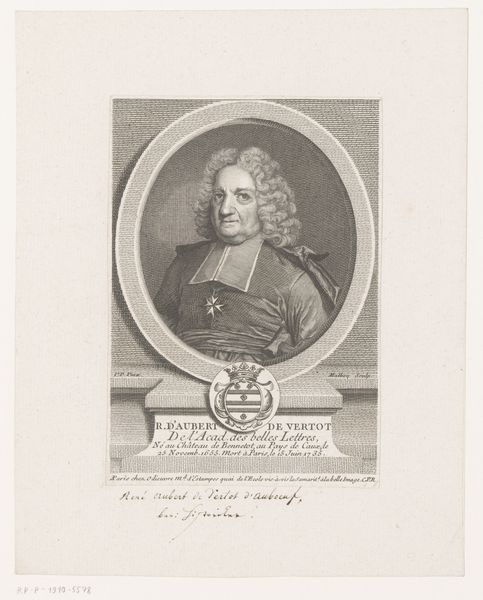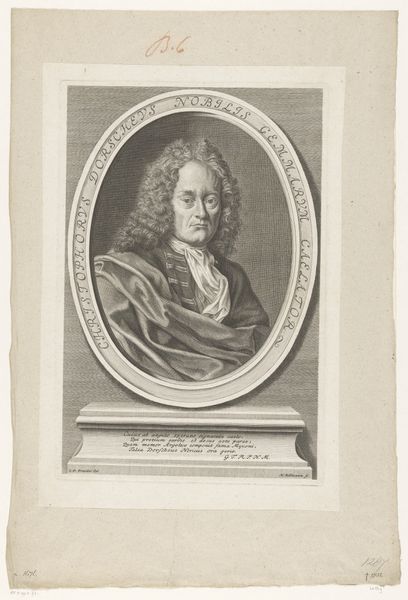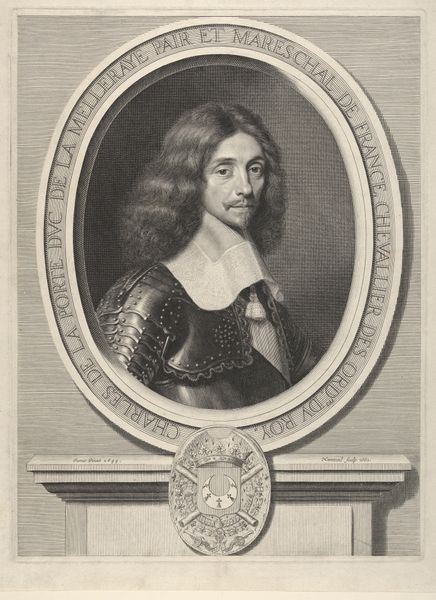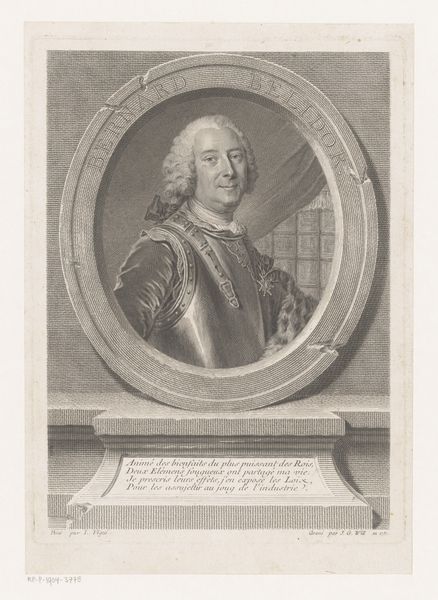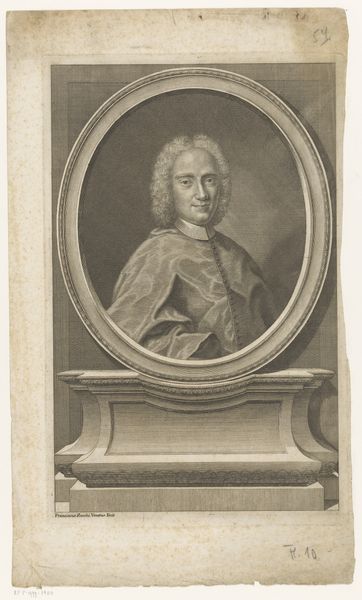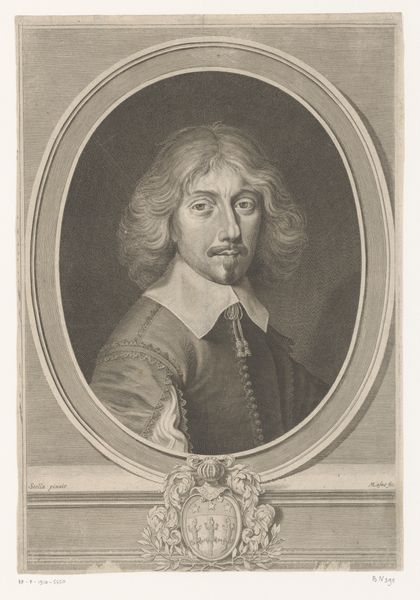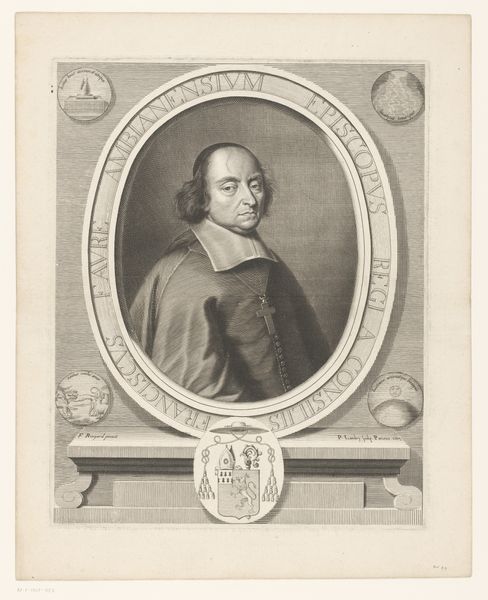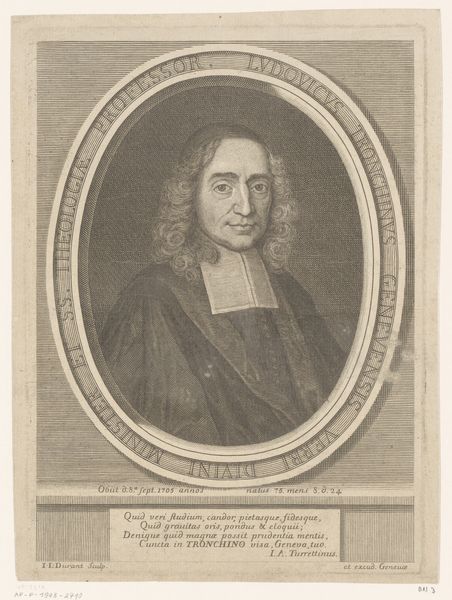
print, engraving
#
portrait
#
baroque
# print
#
old engraving style
#
history-painting
#
academic-art
#
engraving
Dimensions: height 360 mm, width 265 mm
Copyright: Rijks Museum: Open Domain
Editor: This is *Portret van Abraham de Fabert*, an engraving by Francois de Poilly from somewhere between 1632 and 1693. It's quite formal; the oval frame gives it an official feel, almost like a stamp of approval. What cultural narratives or symbols do you see in it? Curator: The portrait presents Abraham de Fabert, a prominent military figure. But it isn’t *just* a likeness. Consider the armor he wears. It speaks to a certain era where personal valor and martial prowess were idealized, embodying the very *idea* of heroism. How might armor function as more than mere protection? Editor: It’s like... a symbol of power, almost a second skin signifying his role and status. The detailed crest below the portrait reinforces that too, right? Curator: Precisely! Heraldry was essentially visual branding, immediately associating the subject with lineage, honor, and specific values. Note how the oval frame isn't just a border, it’s almost like a mirror reflecting a carefully constructed identity back at the viewer. What emotions do you think this curated image intended to evoke in its original audience? Editor: Probably respect, admiration, maybe even a little bit of awe? It feels calculated, designed to project an image of authority. Curator: Indeed. Every element, from the script to the strategic gaze, is deliberately employed to cultivate a certain memory of de Fabert. In its own way, this isn’t just a historical portrait; it is an early form of constructed image designed to ensure legacy. Editor: I hadn’t thought about it as something so consciously *built*. Now I see how everything, even the frame, plays a part. Curator: Recognizing these repeated symbolic frameworks helps us understand the enduring power of images to communicate far more than just surface appearances.
Comments
No comments
Be the first to comment and join the conversation on the ultimate creative platform.

